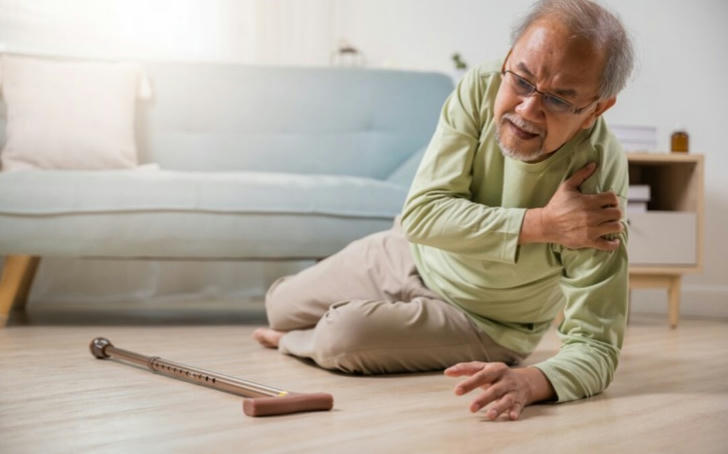2025 Emergency Home Safety for Seniors: Essential Steps to Prevent Accidents
As seniors age, the risk of home-related accidents increases, making emergency home safety an essential topic. According to the CDC, about 36 million falls occur each year among older adults, resulting in more than 32,000 deaths. These incidents often lead to serious health consequences, including fractures and loss of independence. However, with proper precautions, the risks of falls and other accidents can be significantly reduced.

Understanding the Risks: Key Statistics
Falls are the leading cause of injury-related death in seniors aged 65 and older.
Nearly 3 million older adults are treated in emergency departments for falls annually.
About 1 in 4 seniors experience a fall each year, but less than half talk to their healthcare providers about it.
These statistics underscore the importance of taking proactive measures to make the home safer for elderly residents. Simple changes in the home environment can drastically reduce the likelihood of accidents and improve overall well-being.
1. Install Fall-Prevention Features
One of the most crucial aspects of home safety for seniors is preventing falls. The following modifications can minimize the risk:
Non-slip rugs: Place anti-slip rugs or mats in high-traffic areas like the bathroom, kitchen, and hallways.
Grab bars and handrails: Install grab bars in bathrooms, especially around the toilet and in the shower. Stairways should have sturdy handrails on both sides.
Lighting: Ensure that hallways, staircases, and bedrooms are well-lit. Motion sensor lights can be particularly helpful for night-time visibility.
According to the National Institute on Aging (NIA), falls can be prevented by maintaining balance, strength, and mobility, and these adjustments are key in reducing the likelihood of falls at home.
2. Home Security and Emergency Preparedness
In case of an emergency, immediate access to assistance is crucial. Seniors can ensure they are never left alone in critical moments by:
Emergency alert systems: These devices allow seniors to summon help at the push of a button. With features like fall detection, they can alert caregivers or emergency services without requiring the person to move.
Smoke alarms and carbon monoxide detectors: Install smoke detectors in every room and a carbon monoxide detector in the kitchen area. Regularly check batteries to ensure they function properly.
Accessible emergency numbers: Place emergency contacts and medical information in clear view, preferably on the fridge or next to the phone.
A study published in Aging & Health Research revealed that seniors with personal emergency response systems (PERS) experience fewer hospitalizations due to falls or other health emergencies.
3. Address Vision and Mobility Issues
Many seniors face vision impairment and decreased mobility, both of which can increase the risk of accidents. Regular check-ups and simple home modifications can make a huge difference:
Eye checkups: Regular visits to the eye doctor can help identify any vision issues that might be causing difficulty navigating the home. Corrective lenses can improve overall safety.
Mobility aids: For seniors with mobility challenges, using a walker, cane, or wheelchair can help prevent falls. Ensure the home is free of obstacles that could cause trips and falls.
4. Safe Kitchen and Bathroom Modifications
Both the kitchen and bathroom present unique risks for seniors. Simple modifications can enhance safety and reduce injury risk:
Stove safety: Install stove knob covers to prevent burns, and consider stovetop safety devices that automatically turn off the heat after a set period of time.
Bathroom adjustments: Install shower chairs or non-slip shower mats. A raised toilet seat can make sitting and standing easier and reduce strain on the knees and hips.
The National Safety Council (NSC) recommends that seniors have a bathroom that is accessible and safe to reduce the likelihood of slips and falls in these high-risk areas.
5. Stay Active and Engage in Regular Health Monitoring
Regular physical activity is one of the best ways for seniors to maintain strength, flexibility, and balance. Engaging in exercises like yoga, tai chi, or strength training can help prevent falls by improving coordination and mobility. Regular health check-ups, including medication reviews, can also reduce the risks of side effects that might lead to accidents.
Conclusion: A Step Towards a Safer Home
Ensuring the safety of seniors at home requires thoughtful adjustments and ongoing awareness. With simple and effective changes—such as installing safety devices, improving lighting, and keeping active—seniors can enjoy a more secure and independent lifestyle. Taking these precautions now can prevent countless injuries and improve quality of life in the years ahead. By staying informed and proactive, seniors can make their homes safer places to live, reducing the risks of emergencies and promoting long-term well-being.
